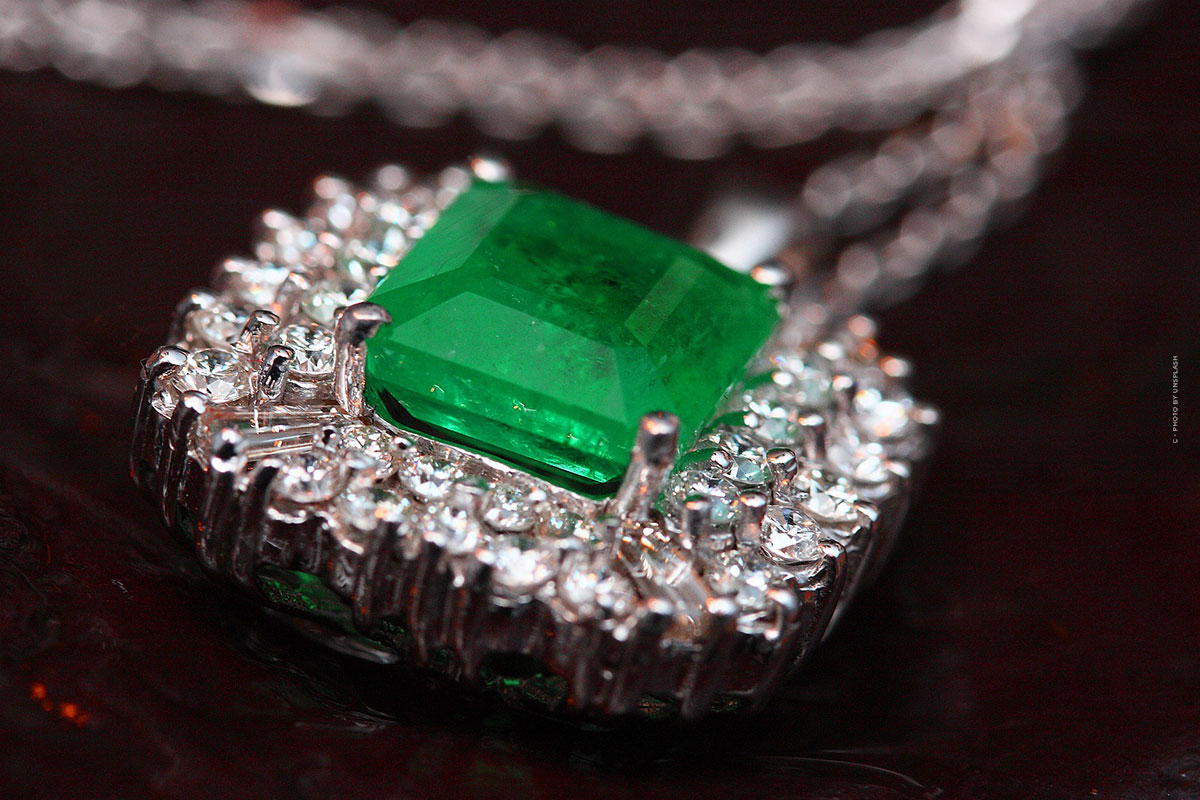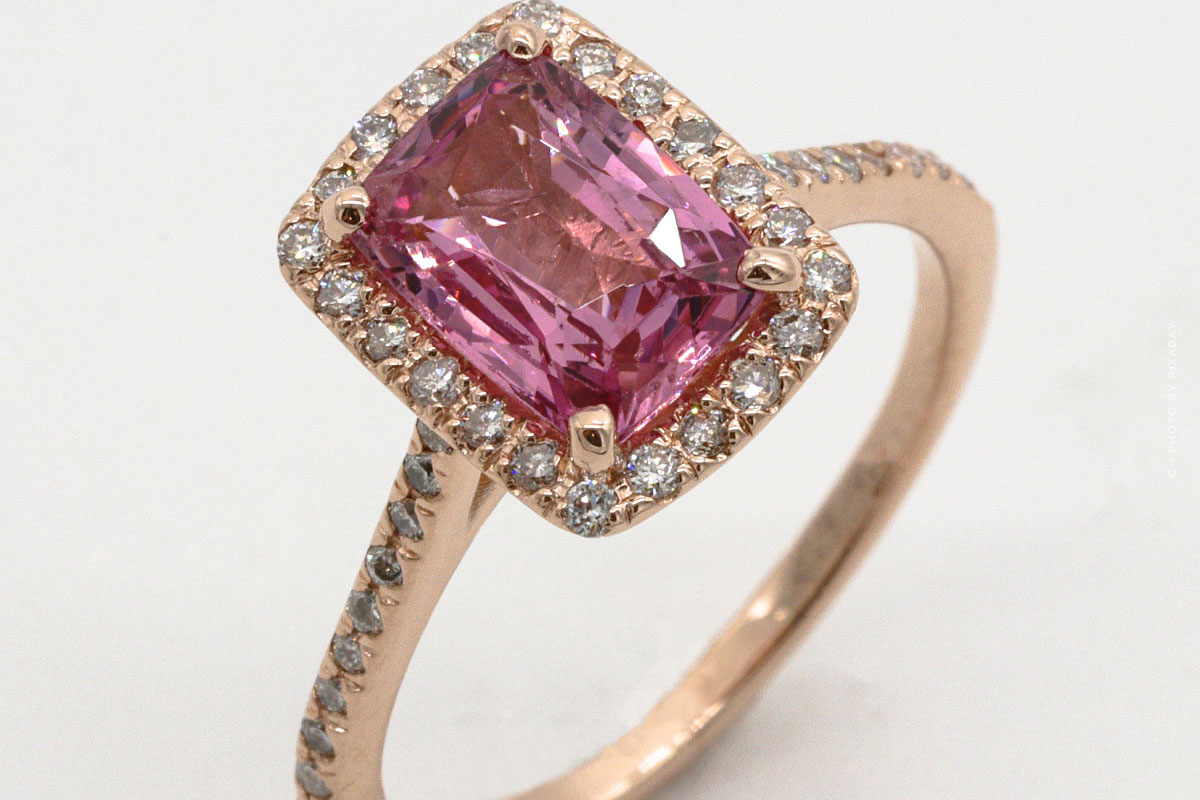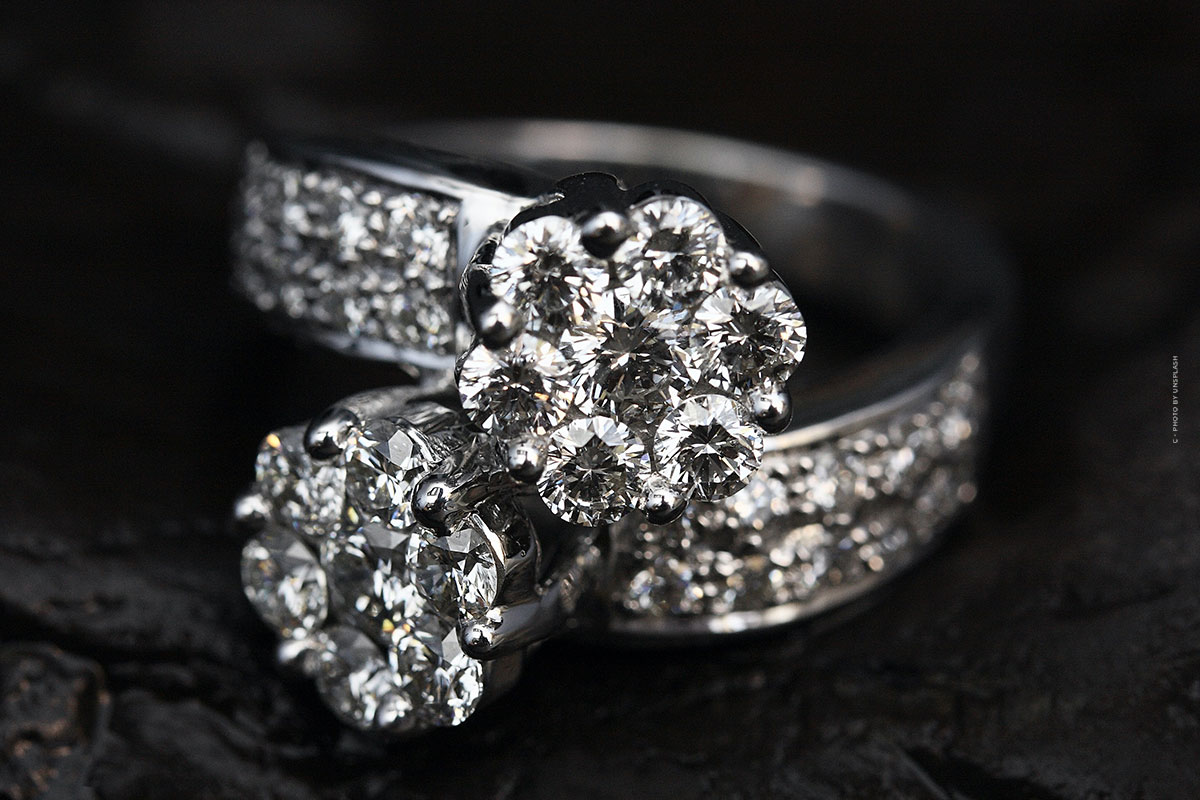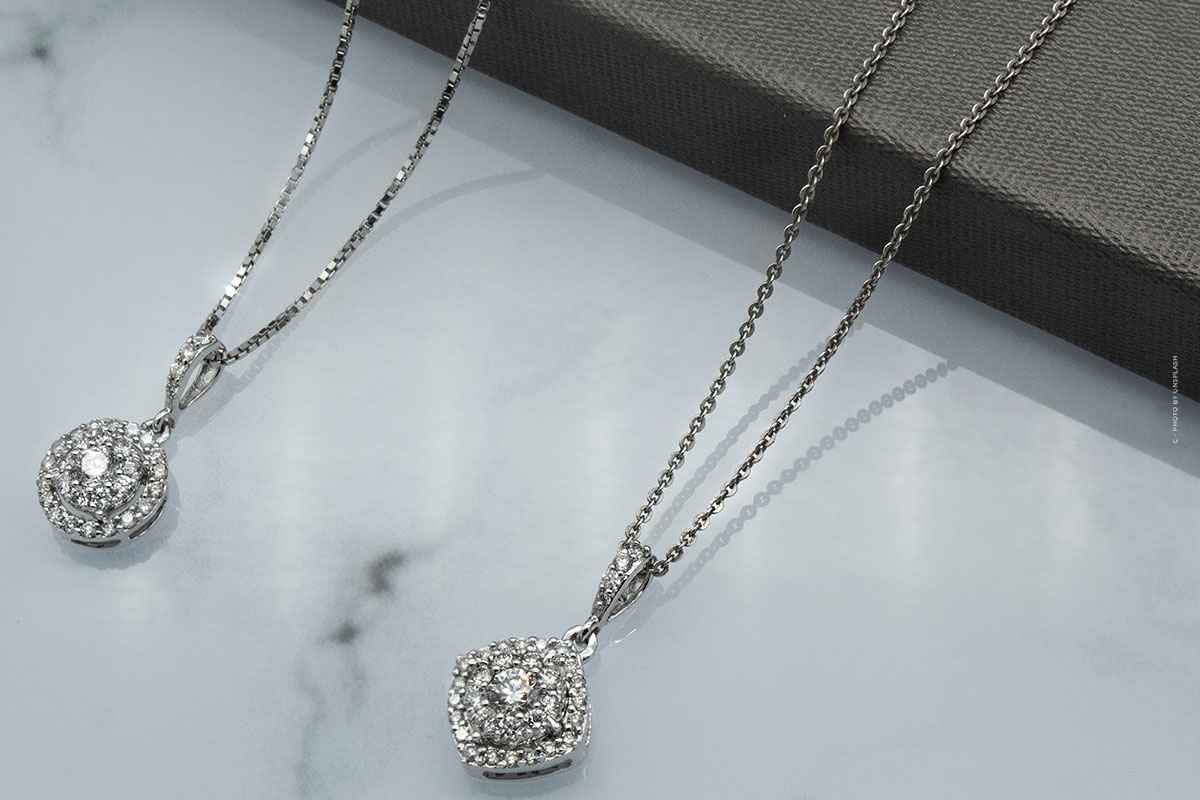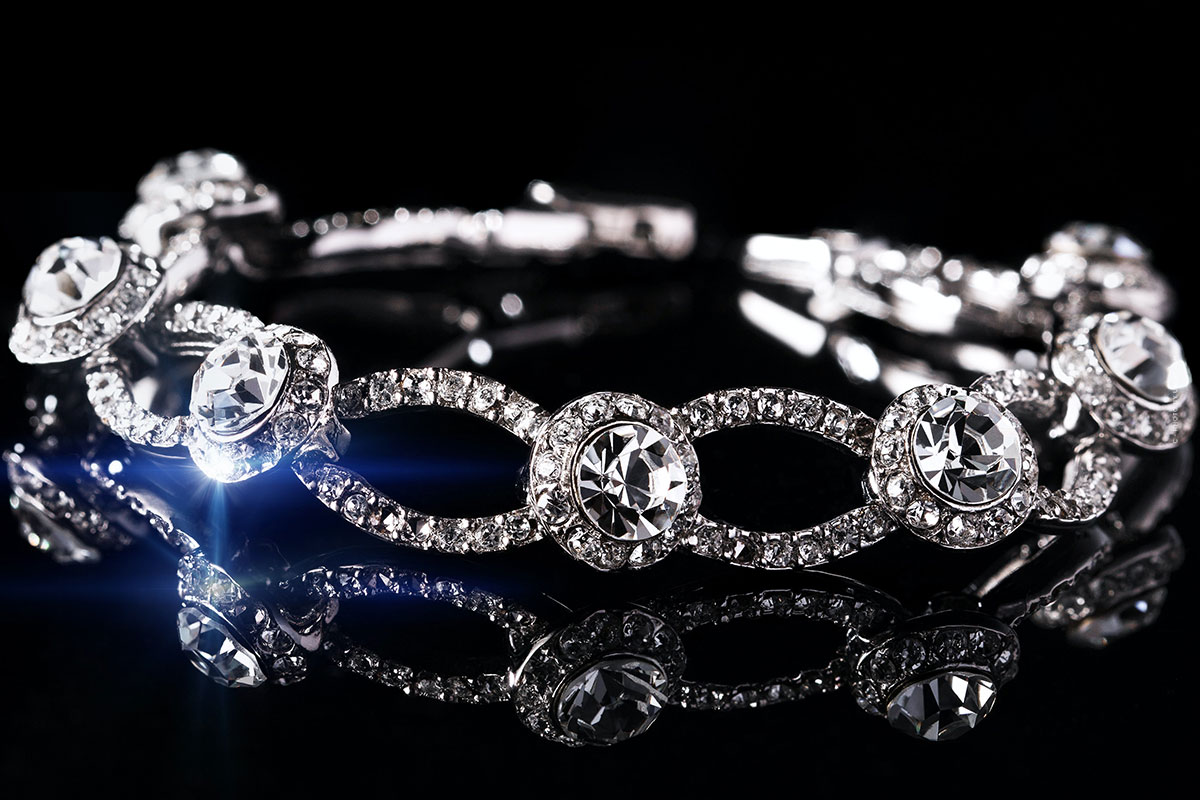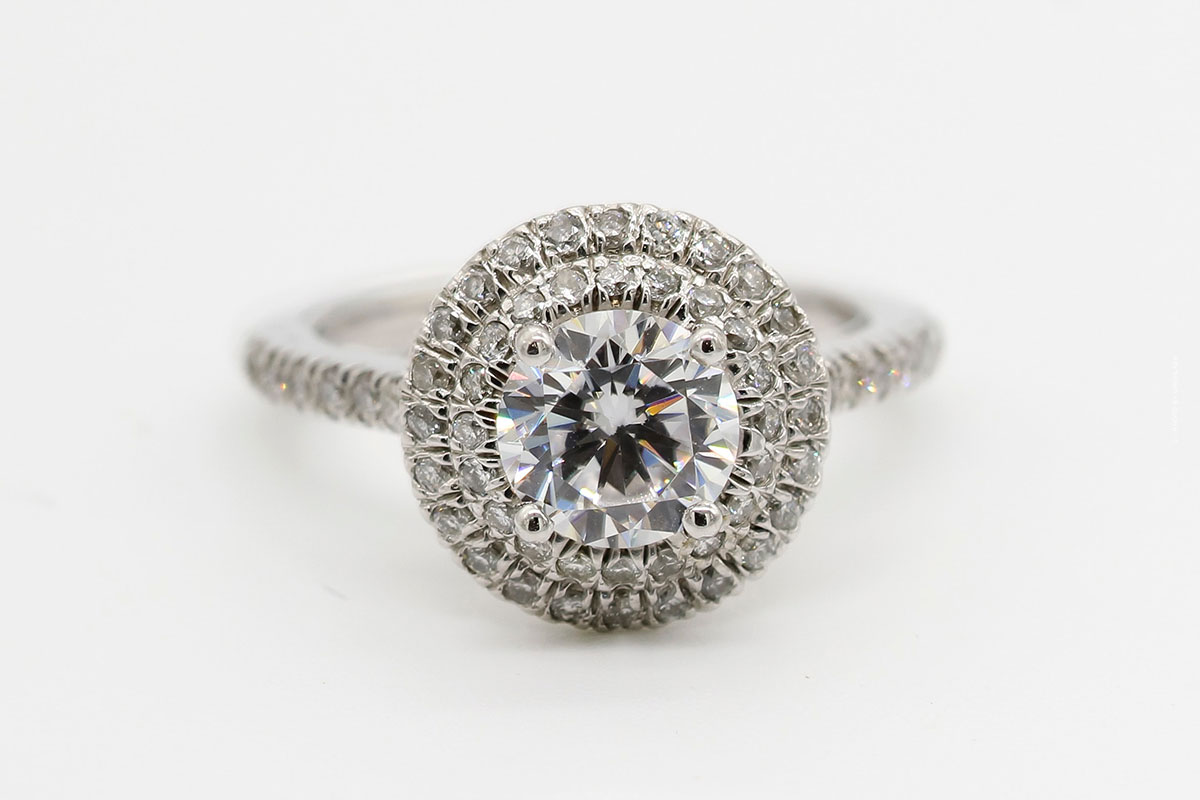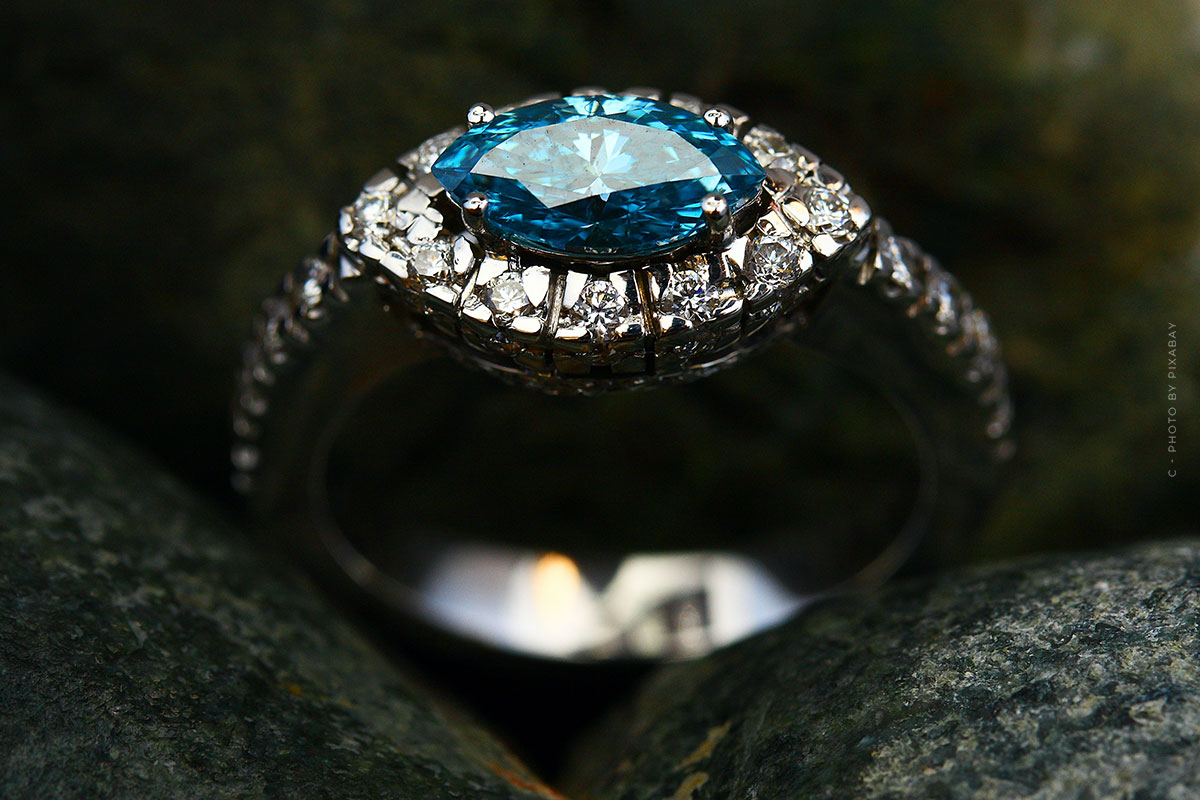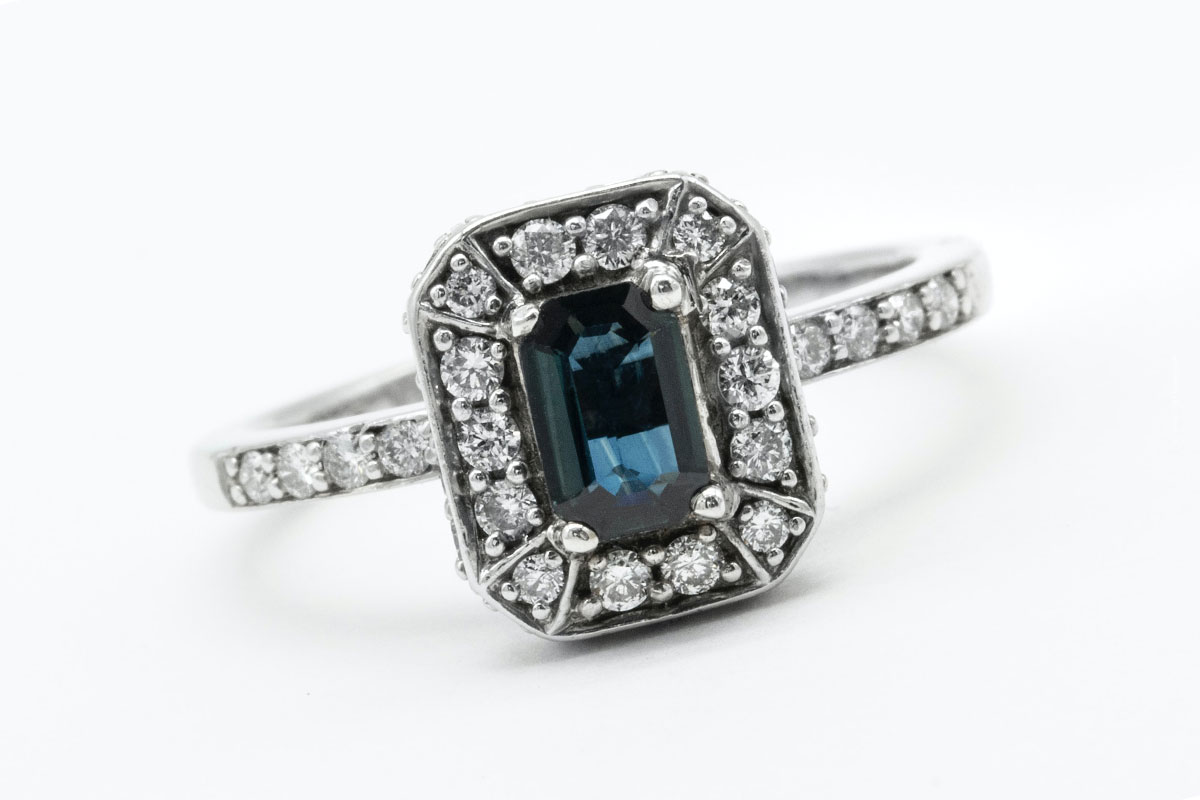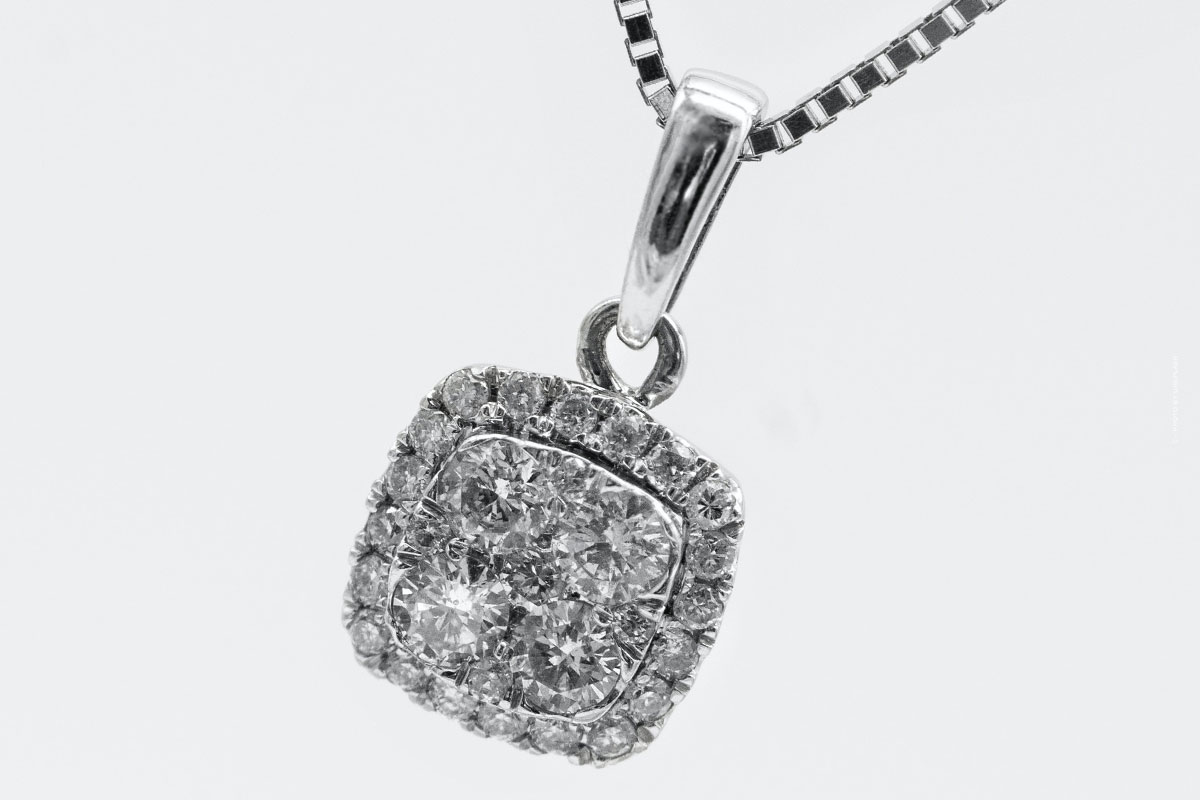Buy Emerald: Price, Carat, Quality & Value – Investment Gemstone
The emerald is a very valuable green to greenish-blue gemstone of the mineral species beryl. The most expensive emeralds have a pure green color with a vivid color saturation that is evenly distributed throughout the stone with no visible color differences. These come primarily from the mines of Colombia and Brazil fetch prices of several thousand USD per carat on the market. Due to the rarity value of high quality emeralds, they can be a perfect addition to any investor’s portfolio.
Emerald price (gram, carat and kilo)
Emerald is one of the most valuable gemstones in the world and is extremely rare, so it can command an exceptional price. As with all colored gemstones, the 4 Cs (color, clarity, cut and carat) determine the value, but emeralds are priced slightly differently than other gemstones because some inclusions are expected.
Especially the deep green gemstones from the mines of Colombia and Brazil achieve prices of several thousand USD per carat on the market. Less green and not quite as pure stones, on the other hand, are available for as little as 120 USD. To judge the quality of emeralds, see the globally recognized grading system at the bottom of the article.
What will interest you most now, of course
How much does an emerald cost?
As already described, emeralds are weighed in carats.
One metric carat equals 0.2 grams
Emeralds are currently valued at an average of $2,451.83 per carat.
So one gram costs on average 12,259.15 USD
Emerald Price Current (08/20):
- 1 carat 2,451.83 USD or 2080.13 EUR
- 1 gram 12,259.15 USD or 10,400.66 EUR
- 1 kilogram USD 12,259,150 or EUR 10,400,662.86
Gold price (gram, ounce & kilo) in comparison
How does the price of gold compare? Many investors who buy gold constantly keep an eye on the price. As an investor, you should too, because prices for precious metals are subject to fluctuations – even if the gold price is usually very stable.
Current difference per gram: +12,198.15 USD
Gold is currently valued at $61 per gram, compared to emeralds, which can fetch up to $12,259.15 as described, a huge difference that makes emeralds interesting for investors in any case.
Gold price current:
- 1 gram 61.14 USD or 52.47 EUR
- 1 ounce 1,901.77 USD or 1,631.90 EUR
- 1 kilogram USD 61,143.33 or EUR 52,466.80
Quality Features: The famous 4 C
A grading system introduced by the GIA was established to rate emeralds, just like diamonds or other gemstones, on four aspects. These 4 grading systems are known as “the four C’s” in which all emeralds are graded:
- Colour
- Cut
- Clarity
- Carat weight(Carat weight)
Colour (Colour #1)
Color is possibly the most important factor in evaluating emeralds, they have a unique color, exclusive to natural emeralds. Color is further divided into hue; the exact color, tone; the lightness to darkness and the saturation or vibrancy of the green color. In top grade emeralds, the hue is green, with no additional color undertones, the tone is vivid and deep, not too dark or too light, and the saturation is consistent throughout.
Facts about the colour at a glance:
- Most important factor for emeralds
- Subdivision into hue, exact color, brightness, saturation
- Top emeralds are green without color undertones
- Saturation uniform throughout
The most valuable emeralds have a pure green color with vivid color saturation evenly distributed throughout the stone and no visible color differences. If the hue tends to blue or yellow, it is not an emerald, but another beryl variety that is devalued. To be a true emerald, the gem must be dark enough and saturated enough to be called an emerald; if the color is considered too light, it is simply a green beryl. The degree of greenness has led to a number of different opinions as to whether a stone can truly be called an emerald.
Shades of precious emeralds:
- Precious emeralds have a pure green color
- Uniform and without visible colour differences
- If shade too blue or yellow: beryl variant
Cut (Cut #2)
Emeralds can be cut into almost any shape, with the round and octagonal “emerald cuts” being the most popular. Any cut that brings out the natural color and sparkle of the gemstone increases its price.
Purity (Clarity #3)
Gemstone clarity refers to the presence or absence of inclusions in the stone. Inclusions are any materials such as minerals, gases, liquids, or even other crystals that were trapped inside during its formation. Of the top four gemstones, the others being diamond, sapphire and ruby, emeralds are unique in the number of high quality specimens that contain inclusions, a flawless emerald is almost impossible to find. In fact, the flaws are what often give emeralds their charm, and the absence of any inclusions is often a sign of a fraudulent stone.
Facts about purity at a glance:
- Presence or absence of inclusions
- Emeralds usually contain inclusions
- Flawless emerald almost impossible to find
- Absence of any inclusions is often a sign of a forgery
Important: clarity and transparency
With emeralds, as with other colored stones, clarity and transparency are closely related. It is generally accepted that emeralds have inclusions visible to the naked eye, but only if they affect the transparency, the price is lowered.
Valuable emeralds with inclusions are so standard that there is even a name for them, Jardin-Smaragde (Jardin is French for garden and is so named because of its mossy or grassy appearance). When choosing an emerald, beware of inclusions that come to the surface of the gemstone, as they may indicate future cracks or fractures.
Carat / Weight (Carat #4)
The final indicator of price is, of course, the size of the emerald. Large carat sizes are particularly rare, so a three carat emerald gemstone is not only three times as expensive as a one carat stone, but probably six times as expensive. The size of an emerald is measured in carats (abbreviated as ct). One carat is equal to 0.2 grams (about 0.007 ounces).
Emeralds (as well as other precious colored gemstones) are often sold with a certification document that lists comprehensive details about the stone, specifically their 4 C’s. These certificates are usually authenticated by recognized organizations such as the GIA and the AGS (American Gem Society) and offer authenticity about the stone being purchased. Emeralds that are certified have a premium over non-certified.
Weight facts at a glance:
- Certification document is often sold together with the stone
- Lists comprehensive details about stone, especially the 4 Cs.
- Certified by recognized organizations
- Offer authenticity about the purchased stone
- Higher prices for stones with certificate
Authenticity test method for emeralds
To know for sure that your emerald is 100% real, you need special gemmological equipment or certificates from recognized authorities. But there are a few techniques that even the beginner can use at home. But use these techniques only as a guide and be sure to have your emerald examined by a professional before buying!
First, look for flaws with a magnifying lens or jeweler’s loupe. It is best to examine your gemstone under magnification, ideally through a jeweler’s loupe. Hold it so that the light falls on it at an angle. If you see tiny flaws or irregular patterns within the crystal, it is probably a genuine gemstone – though not necessarily an emerald. If your gem is very clear and without inclusions, you can assume it is a fake.
This is how you recognize real emeralds:
- Troubleshooting with magnifying lens or jeweler’s loupe
- Hold so that the light falls at an angle
- Tiny flaws or irregular patterns speak for authenticity
- Stones without inclusions are often forgeries
Other known test possibilities
Applying oil to an emerald usually improves its appearance, but with a synthetic stone the clarity does not change. Emeralds conduct heat very efficiently, so you can try a breath test. To do this, breathe on the gemstone and watch the mist – with a real emerald the mist disappears almost instantly, but with a fake it takes 4 or 5 seconds.
When lit, real emeralds produce little to no fire or colorful flashes; if your gem produces a rainbow of lightning, it’s not an emerald. Emeralds are also relatively hard gemstones, and while glass and other weak materials used in fake gemstones wear away quickly, emeralds retain sharp, clean edges on the facets. If the edges of the facets look soft and worn, the gemstone is likely a fake.
In addition, emeralds can be recognized by these characteristics:
- Application of oil improves the appearance
- Clarity does not change with synthetic stones
- Heat test: Real stones conduct heat very efficiently
- Relatively hard – sharp, clean edges
Emerald species and their value
Emeralds can be divided into varieties or types rather than species. Emeralds are sometimes distinguished by their place of origin or the presence of certain impurities. Some of the better known emeralds include:
Colombian Emeralds
Colombian emeralds are mined in Colombia. These emeralds are the most highly prized.
Brazilian Emeralds
Brazilian emeralds are generally lighter green gemstones than those mined in Colombia. The term Brazilian emerald sometimes refers to green tourmalines.
Zambian emeralds
The high-end market was slow to accept Zambian emeralds, but that began to change when Tiffany & Co. began promoting emeralds from Zambia in 1989. Today, Zambian emeralds are well respected and recognized for their own distinctive characteristics.
Emeralds for cat eyes
These emeralds have a cat’s eye effect called chatoyancy, which looks like a wide slit, similar to the pupil in a cat’s eye. Cat’s eye emeralds are very rare and only found in light green emeralds.
Trapiche-Smaragde
The rarest type of emerald is the Trapiche emerald, a very unusual combination of emerald and lutite. Due to the hexagonal structure of the emerald, the two minerals alternate much like the spokes of a wheel, creating a very unique formation. The only known source of these exquisite stones is in Colombia and the local name comes from its resemblance to the rollers of a mill that would extract juice from sugar cane – a trapiche.
Emerald mining in one of the largest mines in the world: Video
Popular for over 4000 years
The name emerald comes from the Greek word smaragdos and the Latin smaragdus, which means green gemstone. This further goes back to the Sanskrit maragdam and the Persian zumurrad. Emeralds were already highly valued in ancient times: the ancient Egyptians, Romans, Indians, Aztecs and Incas already revered this wonderful gemstone.
Emeralds may well have a history as long as that of civilized man, they are certainly ancient gems. In the oldest book in the world, the Papyrus Prisse, which is about 4000 years old, it is once said: But good words are harder to find than the emerald, because it is discovered by slaves among the rocks. The quote probably refers to the mines near Luxor where tools dating back to the time of Ramses II in 1300 BC have been found. Other ancient mines include Muzo, Chivor and Cosquez in Colombia and Mingora in Pakistan, where gems were mined 2500 years ago.
Throughout known history, they have been revered by civilizations around the world, from the Babylonians who wrote about their sales in the markets, to Aristotle who recommended wearing one, to Nero who owned sunglasses made of emeralds, to the Incas who worshipped Umina, a goddess represented by an emerald the size of an ostrich egg!
Popular since ancient times:
- First mention in a 4,000-year-old book
- Were revered by civilizations around the world
- Likewise from famous people like Aristotle and Nero…
Main source: South America
Emeralds are mined all over the world (Pakistan, Afghanistan, Russia, Australia, United States), but Colombia, Brazil and Zambia are the three main sources. Colombia, located on the South American continent, produces arguably the finest of all emeralds and produces 70-90% of the emeralds for the world market.
Emerald search in Austria: Video
From rough stone to gemstone: production
Unlike most gemstones, emeralds are never subjected to traditional heat treatment to change their color or improve their clarity, but this does not mean that they are not treated in any way. This is because most emeralds are not flawless and have numerous internal inclusions and fractures, as well as tiny surface-breaking fissures or cracks. For this reason, the vast majority of emeralds are treated with oils, usually cedar, to improve their clarity.
Treatment with high quality oils
Cedar oil is sticky and thick, so it is not easy to penetrate the microscopic cracks of the emerald. The process therefore requires heat to warm the oil and pressure to push the oil into the cracks. First, the emeralds are cleaned in an acid bath, then the gems are isolated in tanks along with pure cedar oil and sealed tightly. The heat liquefies the cedar oil and the pressure helps it penetrate the emerald’s tiny cracks.
The emeralds are allowed to cool and the oil returns to its viscous state, remaining in the emerald and improving its clarity and transparency. The stones are then removed and cleaned. Finally, the emerald must be oiled and cleaned again to keep it in the best possible condition.
This is how emeralds are processed:
- Cleaning in acid bath
- Subsequent treatment mainly cedar oil
- Penetrates the cracks of the emerald under heat and pressure
- When cooling, the oil remains and improves clarity
Care of the precious emerald jewellery
Precious emerald is pressure sensitive and susceptible to household chemicals. Although emerald is one of the harder gemstones, it still needs to be handled with care due to its naturally enclosed and flawed formation. Special care must be taken when handling emeralds, as they are more fragile than other forms of beryl. You should avoid wearing emerald jewelry if you work with harsh chemicals or household cleaners such as bleach or acid. To clean, you can use warm soapy water and a cloth or soft rag. Be sure to rinse the stones well to remove any soap residue.
Be careful when cleaning:
- Careful treatment!
- More fragile than other gemstones
- Avoid contact with household cleaners
- Warm soapy water for cleaning
Emeralds should still not be cleaned with ultrasonic cleaners and steam cleaners, as these can remove the oils used to enhance the emeralds. Traditional oil for emeralds is stable but not permanent, which means that most emeralds will need to be re-oiled from time to time to restore some of their lost color and luster.
Instructions for care with oil:
- Do not clean with ultrasonic cleaners and steam cleaners
- These remove the oils used for refinement
- Emeralds need to be re-oiled from time to time
- Restores colour and shine
Emeralds can easily scratch other gemstones, and they can easily be scratched by harder gemstones like topaz and sapphires. To avoid scratches, store your emeralds separately from other gemstones and gemstone jewelry. Store your gemstones by wrapping them in a soft cloth and placing them in a cloth-lined box.
Most Valuable Emerald Find Ever: Video
Emeralds: Interesting for investors?
Emerald gemstones are purchased primarily for their beauty, mystery, and emotional appeal, but they can also be a wise investment. Due to the rarity of large cut quality emeralds, prices are expected to rise steadily in the future. Many investors buy high quality emeralds to increase and maintain the value of their portfolios. Also, like all other gemstones, they are easy to store. However, if you are thinking of buying an emerald, you should seek advice from a professional before doing so.
Purchase should be well thought out
Short-term speculation with emeralds is practically impossible due to the value added tax and the high spreads. This can also be used as a fundamental argument against emeralds as a value investment, because the investor is first of all in the red with 19 percent after the purchase and must reckon with further discounts when selling. In addition, there is the lack of a global reference price, as it is available to potential gold investors with the London gold price.
These thoughts are not intended as a general recommendation against buying emeralds, but rather as an invitation to critically reflect on a potential purchase decision.
